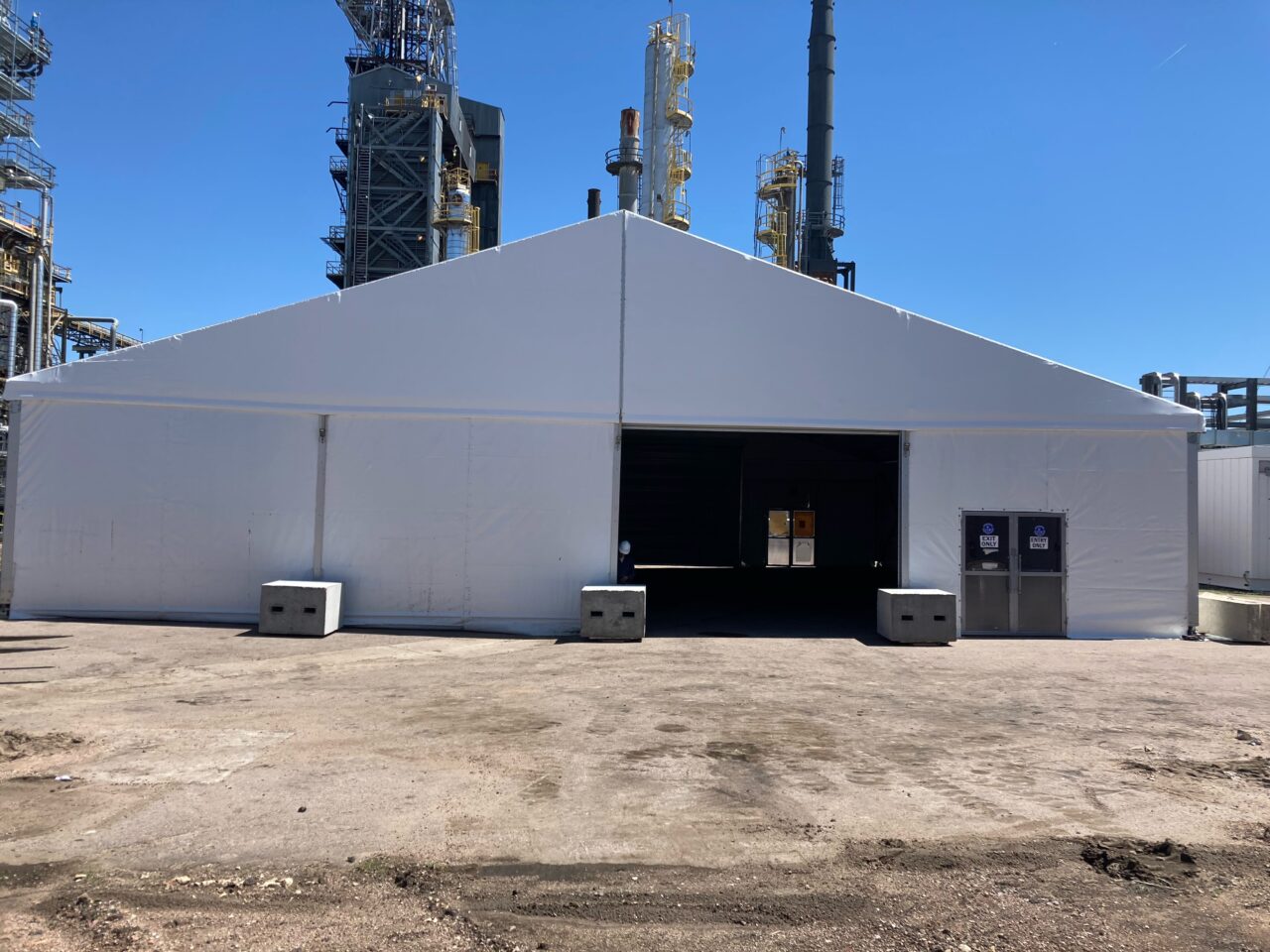From equipment storage areas to workforce tents, there are many ways temporary commercial tents can help keep a turnaround or shutdown from failing. Before installation crews arrive and erect one of these, extensive work has to be done behind the scenes to ensure that it’s optimally suited for the application.
Before you get to choosing storage, tents and crews, it’s best to thoroughly research and map out each job that will be needed for your turnaround or shutdown to be successful, especially including contingencies. It’s crucial to understand what you need, your budget, timeframe, project purpose, and in-depth strategy for how to resolve the issues you may soon face.
Knowing where to start is always difficult. As turnaround or shutdown activities and purposes change, so do the requirements for success. In this blog, we’re going to talk about how to get your planning off to the right start as well as the steps for getting started.
First, let’s dive into what to consider when it comes to contingency planning and what essential elements can cure any oncoming ills that your turnaround or shutdown may encounter.
Remember the Elements of a Turnaround
Inclement weather is key for keeping in mind while planning for your plant turnaround or shutdown, especially since it can easily negatively impact any operation or function. Temporary structures can combat this as they are built from weather-resistant materials and can be fitted with durable sidewalls, providing additional protection from rain, dust, and debris. Energy-efficient heating, air-conditioning, and ventilation systems can also be installed when extreme heat or cold temperatures are expected. (Slip-resistant flooring is also an option to prevent injury on wet or uneven surfaces.)
Know Your Foundational Conditions
Knowing the type of ground surface you are building on helps to dictate and streamline the types of structures, installation and usage you’ll need. Unlevel, loose, sandy, or rocky soil makes driving trucks or storing heavy equipment a challenge. Temporary structures can be erected on most ground surfaces, from loose gravel and soggy soil to smooth asphalt and level concrete. Even if the ground isn’t flat, various flooring options can be chosen to bolster strength and stability, no matter where your temporary structure stands.
Understand Proximity to Utilities During Turnarounds
If your business is in a rural or remote area without access to water or electricity, this can hinder the functionality of your project. Being aware of what temporary amenities are needed and how easily they can be incorporated helps simplify planning, installation, and usage needs. (A mess tent or base camp is ideal for this situation.)
Determine Your Turnaround Equipment Needs
For quality assurance, you’ll most likely need to protect a distanced staff and large equipment on your site, plus quality control is critical for just every commercial or industrial business. This is where a large tent and highly trained personnel can be contracted to perform detailed inspections of all tents, temporary structures, and portable buildings (quarterly). Additional checks of all components should be performed before delivery, and inspectors need to verify efficacy and durability.
Now that you’ve accounted for the contingencies, it’s time to switch gears to your site planning checklist:
- what to take into account,
- how to plan,
- and (most importantly) how to keep your sanity.
It’s going to be a long project so staying sane throughout the long and sometimes grueling process is crucial. Knowing and doing the following will help with that.
Perform Site Surveys
As part of the sale or rental process, you should have an experienced member of your contracted team inspect the temporary structure site to ensure the complexities of the construction processes are well understood. Detailed measurements are usually taken at this time, and abnormalities or potential issues should be noted and relayed to your turnaround manager.
Planning and Feedback for Future Success
After the onsite inspection, design experts should create a comprehensive CAD drawing of the temporary structure’s exterior and interior. That drawing is then submitted for review, enabling you and your turnaround team to become familiar with the plans and provide key feedback for improvements. (This step ensures that you fully understand each of the elements included in your project, especially if you’ve got a clear span tent where you’ll need to know the temporary structure’s location and its proximity to other buildings or processes.)
Permit Acquisition and Regulatory Approvals
If you’re planning on using temporary structures for your turnaround, building and fire codes require tents and portable buildings to obtain a permit from the municipality or region where they are erected. Be sure to choose an expert team that knows how to work closely with towns, cities, and counties to obtain all necessary approvals before the job begins. (The better the relationships with regulatory officials, the smoother your project goes.)
Getting External Turnaround Support
Most manufacturing facilities, commercial proprietors, and government entities rely on third-party service providers to get turnarounds and shutdowns done. When getting these third parties involved, your team should be able to readily provide your detailed project scope, site maps, and any other related protocols to ensure that your extended crew fully understands the project at hand as well as how to make it seamless and successful.
Keeping Peace of Mind
The success of your project and satisfaction with the outcomes is paramount. To make a successful turnaround happen, call on a crew that’s known for exceptional customer service and industry expertise to ensure you have a seamless, hassle-free turnaround or shutdown experience. No matter what structure size, type, and amenities are needed, nor how remote the location is, the team that you choose should be your right hand in helping to make everything run as smooth and easy as possible.




